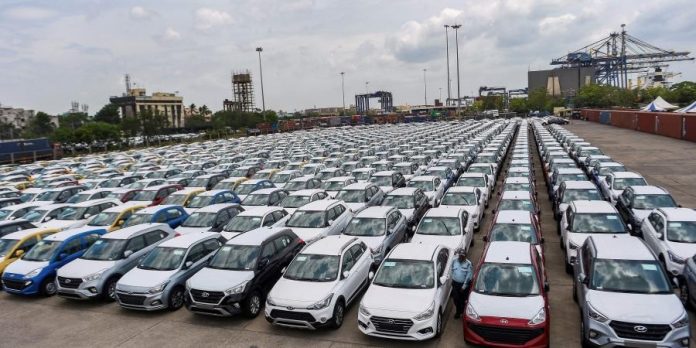There are various reforms and standards in the vehicle industry, one such is, Bharat Stage Emission Standards or popularly known as “BS followed by its version”. Currently, there is BS-VI is in motion. Previously, there was BS-IV (not BS-V).
Overview of Bharat Stage Emission Standards (BS)
Bharat stage emission standards (BSES) are emission standards instituted by the Government of India to regulate the output of air pollutants from compression ignition engines and Spark-ignition engines equipment, including motor vehicles. The standards and the timeline for implementation are set by the Central Pollution Control Board under the Ministry of Environment, Forest, and Climate Change. The standards are based on European regulations which were first introduced in 2000. Here is the list of standards with their respective years-:
- 1991 – Idle CO limits for petrol vehicles and free acceleration smoke for diesel vehicles, mass emission norms for petrol vehicles.
- 1992 – Mass emission norms for diesel vehicles.
- 1996 – Revision of mass emission norms for petrol and diesel vehicles, mandatory fitment of catalytic converter for cars in metros on unleaded petrol.
- 1998 – Cold start norms introduced.
- 2000 – India 2000 (equivalent to Euro I) norms, modified IDC (Indian driving cycle), Bharat Stage-II norms for Delhi.
- 2001 – Bharat Stage II (equivalent to Euro II) norms for all metros, emission norms for CNG, and LPG vehicles.
- 2003 – Bharat Stage II (equivalent to Euro II) norms for 13 major cities.
- 2005 – From 1 April, Bharat Stage IV (equivalent to Euro IV[citation needed]) norms for 13 major cities.
- 2010 – Bharat Stage IV emission norms for 2-wheelers, 3-wheelers, and 4-wheelers for the entire country, whereas Bharat Stage IV (equivalent to Euro IV) for 13 major cities for only 4-wheelers. Bharat Stage IV also has norms on OBD (similar to Euro III but diluted).
- 2017 – Bharat Stage IV norms for all vehicles.
- 2018 – Bharat Stage VI fuel norms from 1 April 2018 in Delhi instead of 2020.[16]
- 2020 – Bharat Stage VI fuel norms from 1 April 2020 nationwide switching India to the world’s cleanest diesel and petrol.
BS-VI and BS-IV
The abbreviation of ‘BS’ is Bharat Stage and is suffixed with the iteration of the actual emission norms. The Indian emissions standards area unit supported the lines of European norms unremarkably called monetary unit a pair of, EURO 3, and so on. The primary rules with the soubriquet in the country were introduced in 2000, with the second and third iteration introduced in 2001 and 2005 with the soubriquet BSII (BS2) and BSIII (BS3), severally. The fourth iteration BSIV or BS4 was introduced in 2017, and therefore the delay between the introduction of BS3 and BS4 resulted in fast-tracking the BSVI or BS6 emission rather than BSV or BS5 norms.
Technology Changes in BS-VI
Technology Changes In Petrol Engines
As per Bharat Stage-6 norms, the emission of carbon monoxide is to be reduced by 30% and NOx by 80%. The BS-6 norms also set limits for Hydrocarbon and particulate emissions, which were not specified in earlier norms. To meet the emission requirements of Bharat Stage-6, the carburetors in petrol engines need to be replaced by the programmed fuel injectors. To further reduce tailpipe emissions, the exhaust system would be fitted with three-way catalytic converters. The norms also mandate On-Board Diagnostic System (OBD) for all BS-6 compliant vehicles.
Technology Changes In Diesel Engines
As per the Bharat Stage-6 norms, the NOx emissions from diesel engines are to be reduced by 70% and particulates by 80%. To achieve this, the engines need to be equipped with Euro-6 compliant technologies. The major technical changes associated with this are:
- Fitting Diesel Pre Filters in the exhaust system.
- Using Selective Catalytic Reduction (SCR) or Exhaust Gas Recirculation techniques to reduce NOx in emissions.
- An on-board diagnostic system required to monitor the malfunctioning of parts related to emissions.
Limitations and Criticism Of BS-VI
- Ineffectiveness of present pollution control system-: The objective of reducing pollution not achieved to a large extent by the present system. Some reasons for this are: – Independent centres do not follow rigorous procedures due to inadequate training – Equipment not subjected to periodic calibration by independent authority – Lack of professionalism has led to malpractice – Tracking system of vehicles failing to meet norms non-existent.
- The non-existence of CO2 limits-: Various groups and agencies have criticised the government and urged the government of India to draft mandatory fuel efficiency standards for cars in the country, or at least to make the CO2 emissions labelling mandatory on all new cars in the country. The auto companies should inform the customers about a vehicle’s emissions.
- Lag behind Euro standards-: There has been criticism of the fact that the Indian norms lag the Euro norms. As of 2014, only a few cities meet Euro IV or Bharat Stage IV standards that are nine years behind Europe. The rest of India gets Bharat Stage III standard fuel and vehicles, which are 14 years behind Europe. Also, there was a suggestion from some bodies to implement Euro IV norms after Euro II norms, skipping the Euro III norms totally. This is because the Euro III norms are only a small improvement over Euro II, whereas Euro IV norms mark a big leap over Euro II.
Check out Top 5 BS-VI cars in India.
To know about upcoming cars in India.





